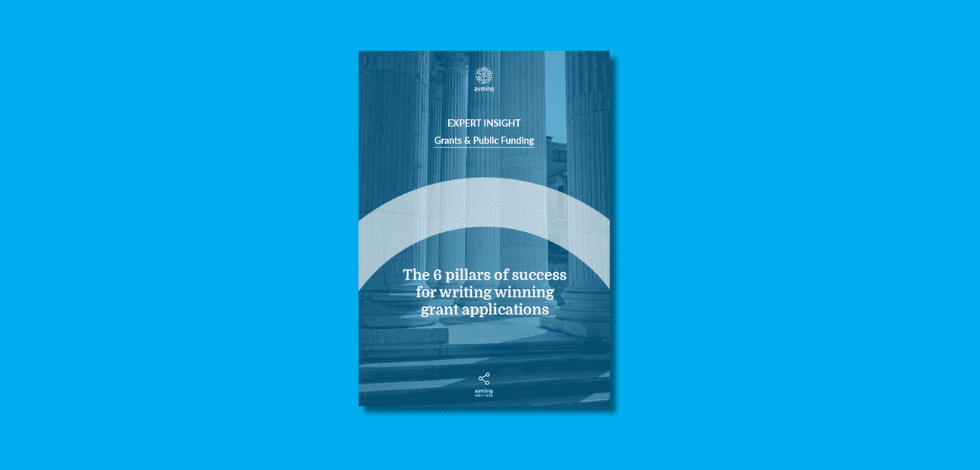Construction projects are as difficult to predict as the English weather.
One second it’s smooth sailing in the sunshine. The next it’s flash flood rain and panic stations.
An unexploded World War II bomb, an ancient mass burial site or a medieval mansion could all be unveiled by the most seemingly straightforward of construction projects – and in a moment the whole approach to a project has to be reconsidered.
Luckily, construction firms have something of an umbrella to shield them from potential downpours: R&D tax incentives.
These incentives are of vital importance now that the forecast for the industry looks uncertain, and perhaps somewhat stormy. Despite the fact that growth in the construction sector hit a seven-month high in October 2016, slowing order books and soaring costs, associated with a weak pound, are hitting the sector. Costs need to be kept in check and cash flow managed, and effective use of R&D tax credits is a tool to achieve this.
But for this to become a reality, the construction industry’s approach to R&D has to change.
There is a long-standing perception that research and development is restricted to people in white lab coats. This simply is not the case, and in fact HMRC actively encourages the construction industry to pursue these incentives. The last year has seen an increase in their adoption, but whilst construction accounts for 6.1 per cent of UK GDP, it still only constitutes 2.71 per cent of total R&D tax credit claims.
Even less well understood though, is the important point about how best to use the initiatives. The current approach tends to be retrospective – claims are submitted after a project is complete. Whilst a lump sum pay-out is welcome at any time, this cannot be used strategically unless it is factored in as part of the tender process and then accounted for in real-time during a project.
In this way, the cash-back from these activities can be included in cash flow modelling and the budget of an individual project from the outset. Construction firms can then make their pricing more competitive, or even consider a project that might not have otherwise appeared profitable. Given that the contribution could be anything from 8 to33 pence back from every eligible pound spent, this could give them a significant edge over the competition.
But how should companies review their approach to R&D?
For many, factoring in R&D at the tender process is a completely new way of thinking. In a large part, it’s simply a case of educating staff to think differently and approach the tender process from a new perspective. Management teams need to understand the rules and understand what constitutes R&D including, for example:
- Advances in engineering to develop new or unique materials;
- Design and build of specialist machinery, or modification of existing equipment;
- Adaptation of existing construction methods or designs to overcome site challenges, such as restricted access;
- Introduction of environmentally friendly processes, such as significant reduction of waste.
Beyond that it’s a case of identifying the areas that are likely to qualify for R&D tax relief up front, and making the appropriate calculations; then, adoption of real-time tracking and recording of qualifying R&D activities and expenditure. A seemingly straightforward project could be hiding a host of challenges forcing plans to change and on-the-job improvisations. These innovations should be tracked and recorded as they happen – in fact HMRC encourage real-time tracking – to ensure that businesses are claiming every penny they can. Of course, this approach carries a small risk, because you’re making calculations against claims that have not yet been approved, but if the process is well-understood, that risk is mitigated.
Properly used, HMRC’s R&D tax incentives can be a powerful and strategic tool enabling more competitive pricing and bolder business decisions. But the impact of rethinking R&D incentives does not stop at a company level. Tight margins and challenging projects are becoming the norm in the current socio-economic climate. But, by factoring in R&D tax incentives at tender stage across the board, businesses can take on more complex projects rather than having to water them down, keeping the industry moving forward.
Ultimately, construction forms a crucial part of the backbone of the UK economy and a strong construction sector is central to a strong and prosperous Britain. Construction output in the UK is more than £110 billion per year and contributes *6.1 per cent of GDP. With HS2, the Heathrow runway expansion and a potential residential housebuilding boom, the industry has an opportunity to lead by example during this challenging period for UK business. The future will undoubtedly present a perfect storm of challenges but if the industry utilises the tools at its disposal, including R&D tax credits, it should be able to not just weather the storm, but come out dry.
This article has been published in:
- Construction Update
- Building.co.uk
- The Builder
- UK Construction













No Comments